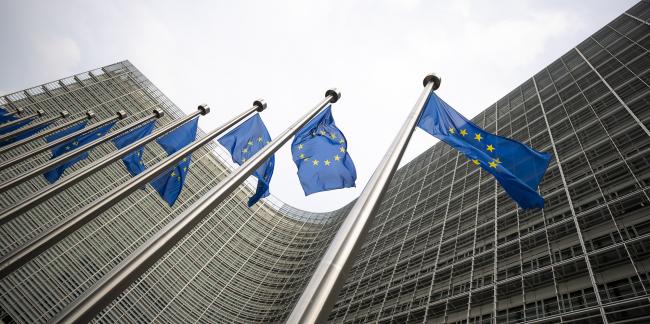(Bloomberg) -- The European Commission cut its euro-area growth and inflation forecast for next year as trade tensions and policy uncertainty weigh on the region, strengthening Mario Draghi’s case for further stimulus measures.
The latest warning comes just two weeks before the European Central Bank’s next policy meeting, where it may lower interest rates or signal that stimulus is imminent.
In its quarterly forecasts, the EU’s executive arm trimmed its 2020 euro-area GDP projection to 1.4% from 1.5% amid what it said were increased downside risks. On inflation, both this year and next were lowered modestly to 1.3%. The ECB aims for inflation of just below 2% over the medium term.
The report reflects more pronounced weakness in the region, which has stumbled along with the global economy as trade disputes hit manufacturers and dent broader confidence. As hopes for a stronger second-half performance fade, the Commission said an extended economic confrontation between the U.S. and China, the global trade downturn and Brexit are all threatening the fragile economy.
“The resilience of our economies is being tested,” said European Commission Vice President Valdis Dombrovskis. “On the domestic side, a ‘no deal’ Brexit remains a major source of risk.”
The EU’s forecasts come in the wake of economic numbers -- particularly in Germany -- that have added to pessimism about the euro area. All of that is giving ECB President Draghi reasons to follow through his pledge to loosen monetary policy again if the situation doesn’t improve. A survey of investors this week suggested a German recession is likely, and confidence among French manufacturing executives is at its weakest in six years.
In June, ECB officials indicated that they’re willing to cut interest rates further and possibly even restart asset purchases if needed. While the prospect of additional easing was welcomed by markets, some observers have questioned the feasibility of such moves given the weak profitability of banks, which are struggling with negative interest rates.
Germany and Italy are projected to have the lowest growth rates in the euro area this year, dragging down the outlook for the rest of the bloc. The currency bloc’s biggest economy will expand by 0.5%, while Italy is flirting with stagnation at 0.1%. Those numbers are unchanged from May projections, as is the 1.2% forecast for the euro area.
“The rebound anticipated later in the year now looks weaker, as the global manufacturing cycle has yet to bottom out and the outlook for trade and investment continues to be clouded by protectionism and uncertainty,” the commission said. “This adds to concerns about the medium-term outlook in China and the recent intensification of geopolitical tensions in the Middle East.”
